
TARCOLES RIVER AND MANGROVE FOREST CRUISE - TRANSFER TO SAN ISIDRO WITH STOPS AT QUEPOS
WEATHER: wall to wall sunshine, hot with a nice cooling breeze
What a superb morning we had, fantastic weather a lovely cruise through beautiful landscapes, with some excellent birding thrown in! We booked an early morning cruise along the Tarcoles River and then into the mangrove forest we met up at 5:30am and by 6:15 we were on the boat heading upriver. I can’t tell you how great the birding was my group was mesmerised and the photographers amongst them thought they died and gone to heaven. The water was flat calm, the light was exquisite and the birds surrounded us in every direction. We saw no end of herons, ibis, spoonbills, egrets, waders and kingfishers. We added Belted Kingfisher to our kingfisher list and Peregrine to our Falcon list.
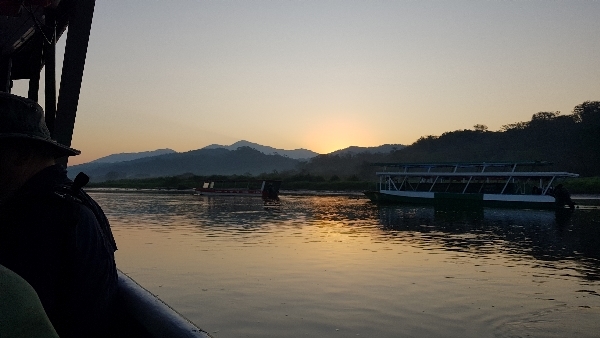
The Tarcoles River at sunrise
Every few meters along the shoreline on both sides of the river you could see something moving and the trees, bushes and scrub were also alive with birds. One tree held Painted Bunting, Mourning Warbler and small flock of Morelet’s Seedeaters. We also saw Trogons, Motmots, flycatchers and both Grey and Black Hawks.
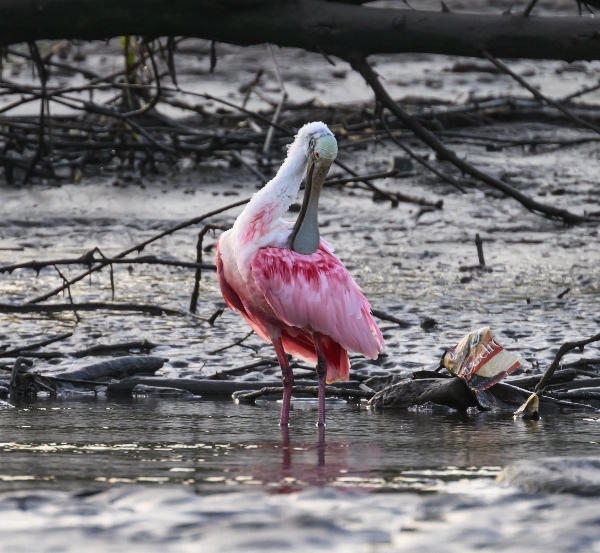
Roseate Spoonbill - Richard Pettett
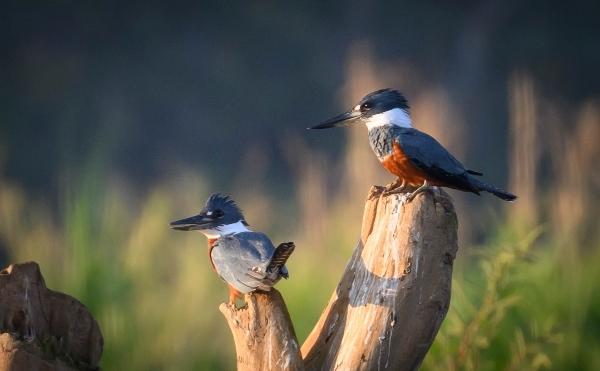
Ringed Kingfisher - Richard Pettett

the front and rear of a pair of Turqoise-browed Momots - Ricard Pettett
We drifted down towards the river mouth where open sandy beaches and muddy banks prevailed, there we added Royal Tern and Laughing Gull and several Ospreys were dotted about on dead trees. We drifted close to the bank where two male Bare-throated Tiger-Herons were postering, it was amazing to see, they fluffed out their neck feathers stretched their wings and march towards one another.
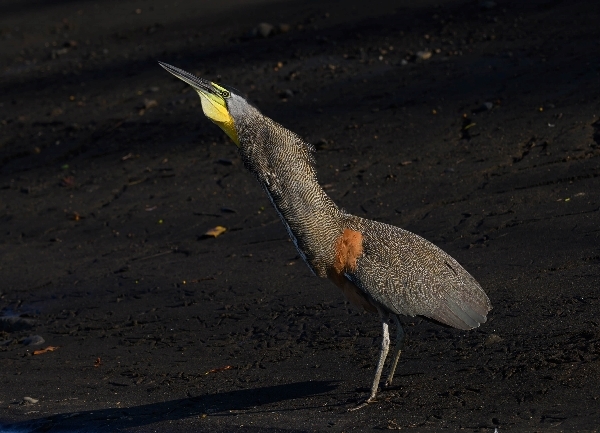
One of the posturing Bare-throated Tiger-Herons - Richard Pettett
A huge number of Magnificent Frigatebirds allowed close approach as we drifted below their roost trees, some of the males had their breeding red-throats on display, like huge red balloons tucked under their bills.
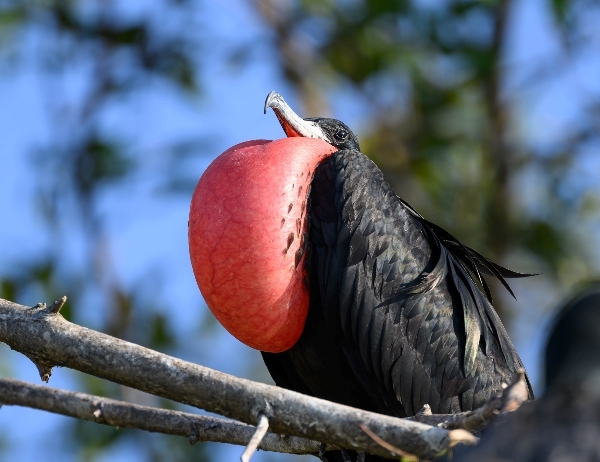
The male Magnificent Frigatebird in full display mode - Richard Pettett
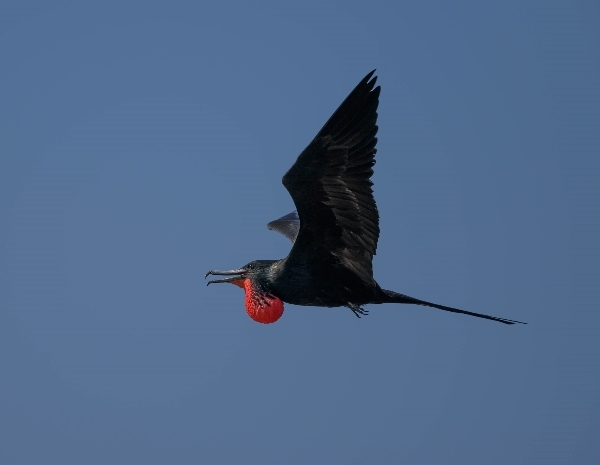
We got down to serious business as we entered the mangrove forest, our target birds were the American Pygmy Kingfisher and the endemic Mangrove Hummingbird. We saw both as the eagle-eyed boat captain pointed them out to us. We also saw Prothonotary Warbler, Chestnut-sided Warbler, Northern Waterthrush and lots of Spotted Sandpipers.
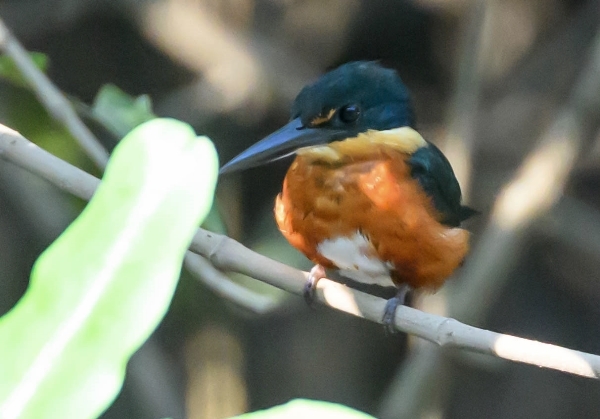
The American Pygmy KIngfisher - Richard Pettett
It was a thrilling experience drifting through the channels of the mangrove forest, peaceful, tranquil and very quiet except for bird calls and the purr of the engine of the boat. Two and a half hours flew past like a hummingbird on steroids and before we knew it we were on the bus back to the hotel for our 9am breakfast. We added Short-tailed Hawk to our list as we stopped by the roadside to see one circling on the morning thermals.
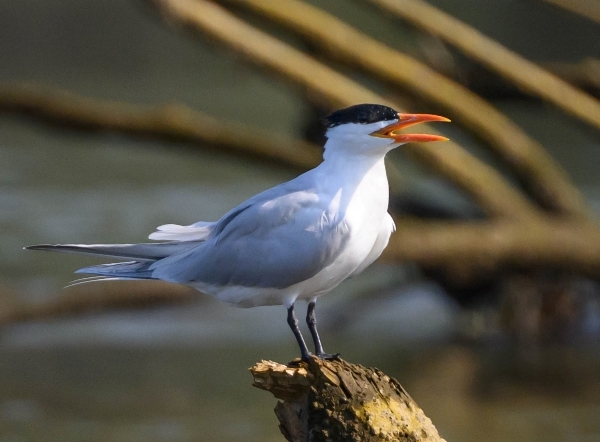
Royal Tern Richard Pettett
At 10:45 we said goodbye to hotel and all the Scarlet Macaws ( a conservation project in the hotel grounds provides nesting boxes for them) and eade south to Quepos. We mad a short stop at the marina at the south end of Quepos to look for Wandering Tattler and Brown Booby.
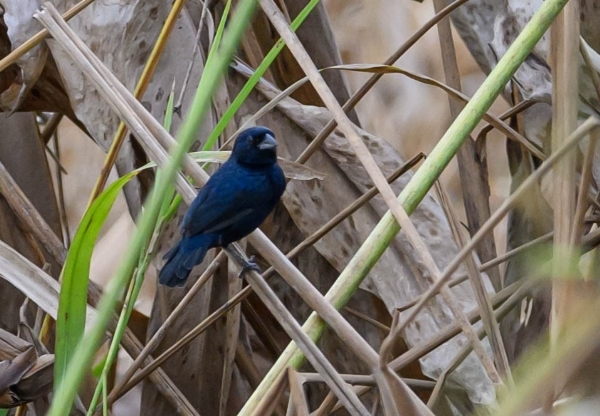
our first Blue-Black Seedfinch - Richard Pettett
We searched the rocks in some idyllic coves for the former and we scanned the ocean for the latter, neither of which had the courtesy to show up. Jason led us to the main concourse in the marina where we searched the gardens for a Tropical Mockingbird, we found one after a short while. Before lunch we were taken to a dirt track in an area east of Quepos called Naranjito, Jason knew of a site where we could see Common Potoo. He wasn’t wrong, we saw two them sitting on roadside fences, one was a whitish juvenile. They looked amazing what an incredible bird and what a ridiculous place to roost!
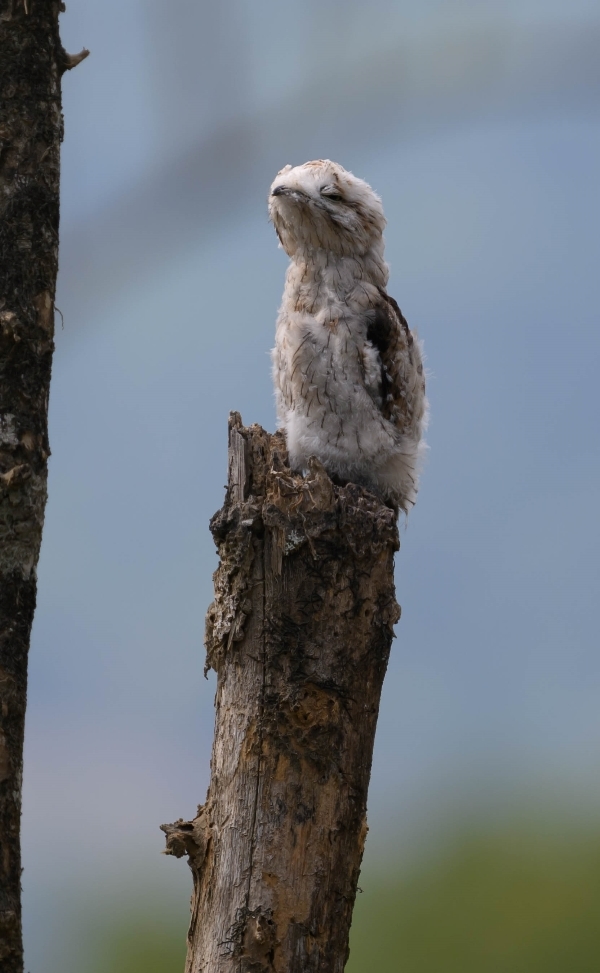
the juvenile above and adult below - both taken by Richard Pettett - Common Potoo
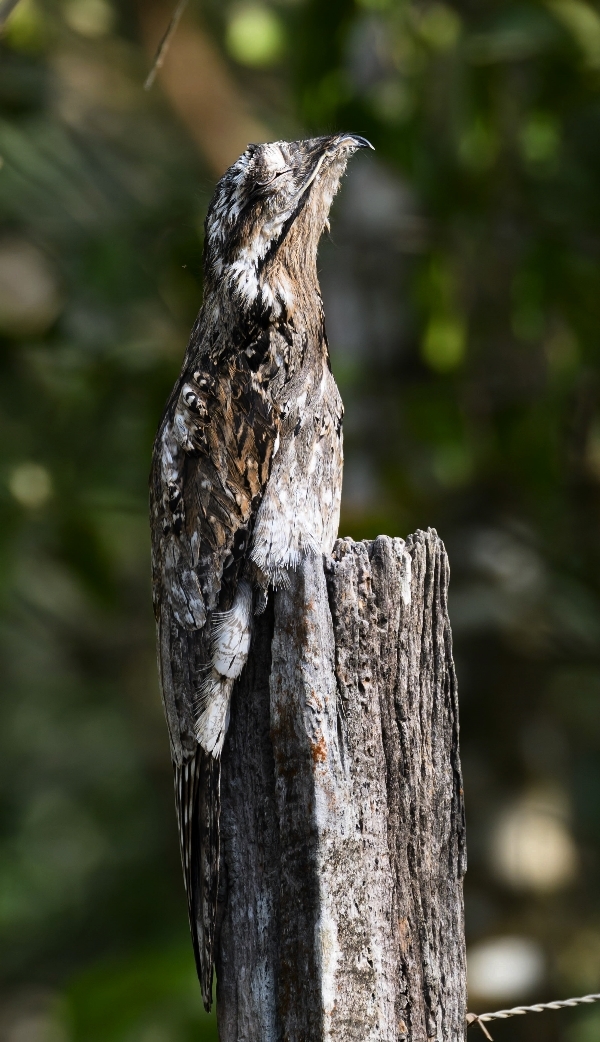
We ate lunch at a modern restaurant on the side of the main road where we saw an Tropical Mockingbird and a few other species before we drove further south. It was 3pm when we made our last birding stop. We drove through the palm droves that lined both sides of the road and came to some open fields with an avenue of deciduous trees, mainly Poro trees.

Southern Lap[wings in flight - Richard Pettett
We spent a happy hour in the afternoon sunshine, it was hot and humid but the birding was good. We added Long-billed Starthroat, Blue-black Grassquit, Scrub Greenlet and Red-crowned Woodpecker to the list and we saw plenty of other species. A flock of some 50+ Southern Lapwings was nice to see, we also had close views of Roadside Hawk and in the scope views of the beautiful Blue-throated Goldentail Hummingbird.
Our journey continued into the early evening arriving at our next lodge at 6:30pm in the dark, I can’t wait to see what birding delights await us in the morning.
